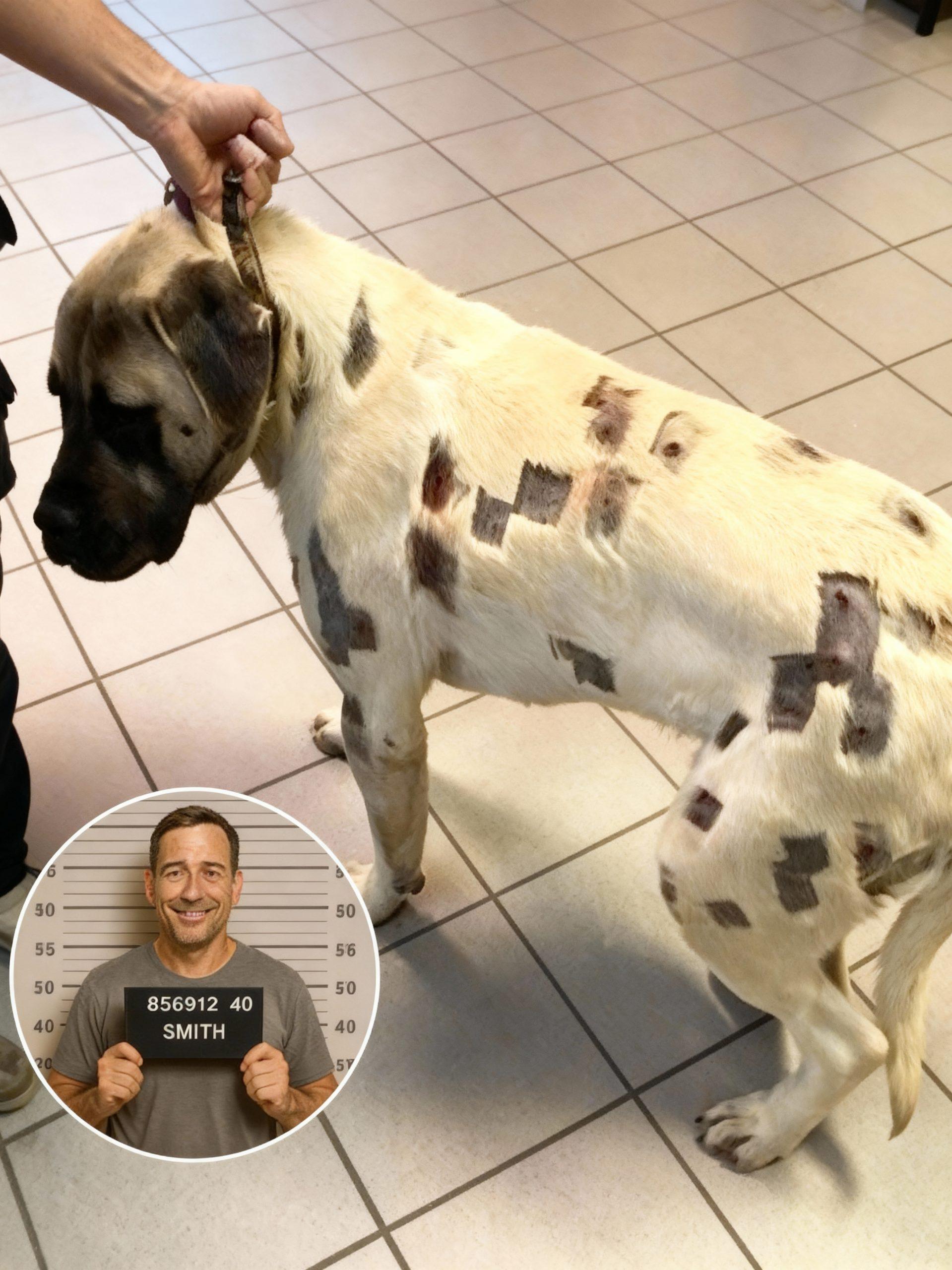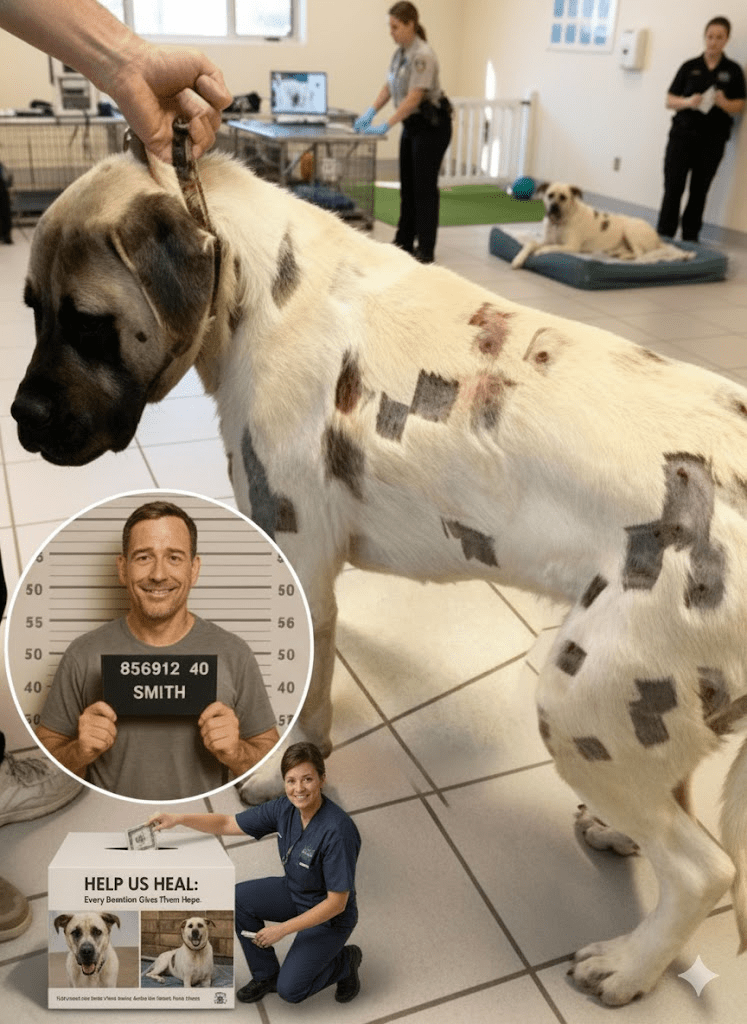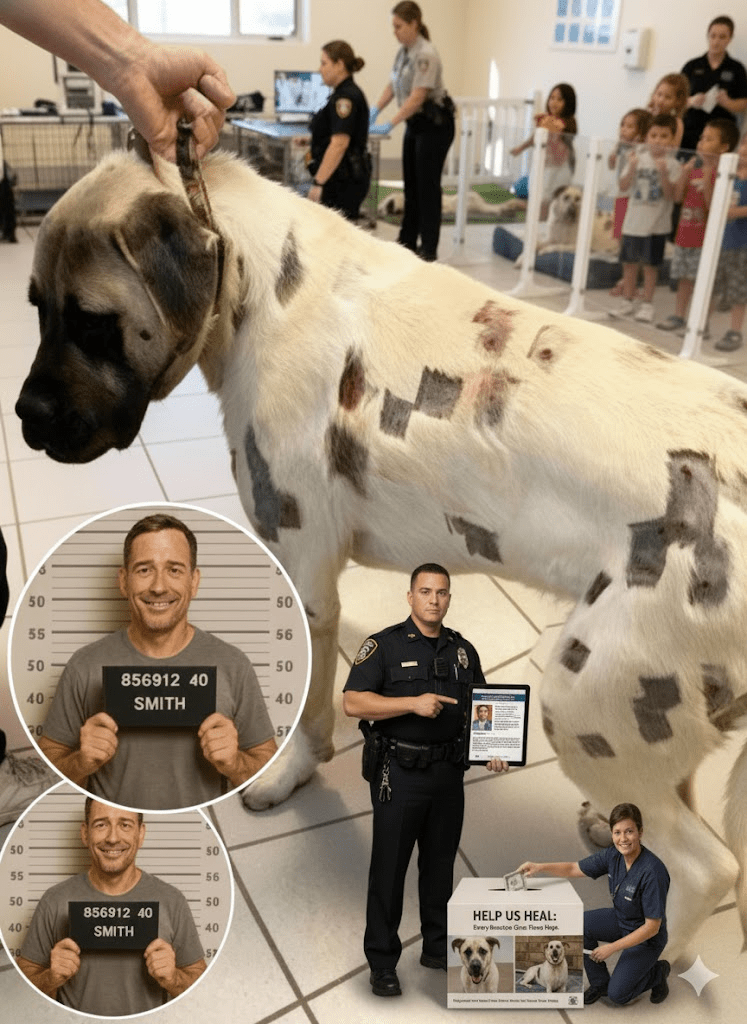The image before us is a stark and deeply unsettling tableau. It depicts a dog, its once pristine coat now marred by what appear to be numerous square-shaped patches of discoloration, hinting at a history of trauma and neglect. A human hand gently grips the dog’s fur near its ear, a gesture that, while seemingly comforting, underscores the animal’s evident vulnerability. The dog’s head is bowed, its expression difficult to discern but resonating with a profound sense of sadness and possibly fear. Its stance is tentative, suggesting discomfort or perhaps a lingering unease in its environment. The backdrop of what appears to be a clinical or institutional setting further emphasizes the gravity of the situation, hinting at intervention and the potential for healing. In the foreground, almost as a haunting counterpoint, is a smaller inset image—a mugshot of a man, his face betraying a complex mix of emotions, perhaps resignation, defiance, or even a twisted sense of pride. This juxtaposition immediately draws the viewer into a narrative of suffering and culpability, urging us to question the circumstances that led to this animal’s condition and the actions of the individual seemingly connected to its plight. The overall mood is one of quiet despair, tempered by the faint glimmer of hope that professional intervention might bring. It’s a visual plea for empathy and a call to action against animal cruelty, compelling us to look beyond the surface and delve into the deeper implications of such profound suffering.

Animal cruelty, in its myriad forms, represents a profound betrayal of trust and a horrifying testament to humanity’s capacity for malice. It extends far beyond physical violence, encompassing neglect, abandonment, and the psychological torment inflicted upon sentient beings who are utterly dependent on us for their well-being. The consequences of such acts are devastating, leaving animals with not only physical scars but also deep-seated emotional wounds that can take years, if ever, to heal. The animal in the primary image, with its visible patches of fur and somber demeanor, serves as a poignant reminder of the pervasive issue of animal abuse. Each discolored patch tells a silent story of potential injury, neglect, or even deliberate harm, making us confront the uncomfortable truth that such suffering often occurs hidden from plain sight, behind closed doors, until intervention brings it to light.

The human element in this tragedy is equally compelling and disturbing. The mugshot of the individual, juxtaposed with the suffering animal, immediately raises questions about accountability and justice. While we cannot definitively ascertain the nature of his involvement solely from this image, the placement suggests a connection to the dog’s plight. This inclusion highlights the critical role of law enforcement and legal systems in addressing animal cruelty. Holding perpetrators accountable not only serves justice for the individual animal but also sends a clear message to society that such acts will not be tolerated. The grim reality is that animal abusers often face lenient penalties, which can be disheartening for advocates and those working tirelessly to protect animals. Strengthening animal cruelty laws and ensuring their rigorous enforcement are crucial steps towards fostering a more compassionate society.

For animals like the one pictured, rescue and rehabilitation are often a long and arduous journey. It involves not only addressing the immediate physical injuries but also providing extensive behavioral support to help them overcome the trauma they have endured. Many abused animals arrive at shelters terrified, distrustful of humans, and exhibiting various behavioral issues. Patience, compassion, and specialized training are essential to rebuild their trust and help them learn to live without fear. Veterinarians, animal behaviorists, and dedicated shelter staff play an invaluable role in this process, working tirelessly to restore these animals to health and prepare them for loving, forever homes. The sight of this dog in what appears to be a clinical setting offers a glimmer of hope, indicating that it is now receiving the care it desperately needs.







